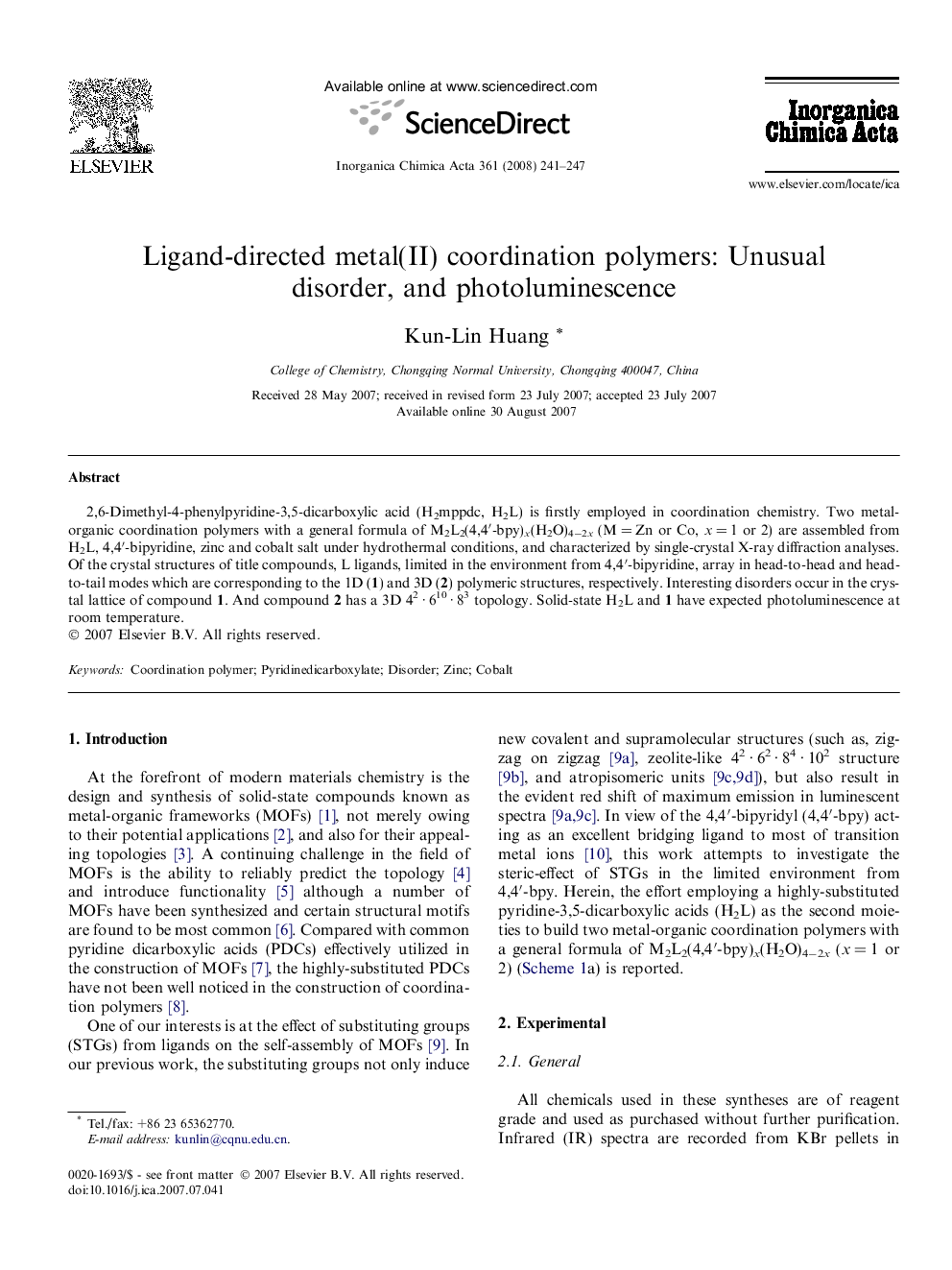| Article ID | Journal | Published Year | Pages | File Type |
|---|---|---|---|---|
| 1307588 | Inorganica Chimica Acta | 2008 | 7 Pages |
2,6-Dimethyl-4-phenylpyridine-3,5-dicarboxylic acid (H2mppdc, H2L) is firstly employed in coordination chemistry. Two metal-organic coordination polymers with a general formula of M2L2(4,4′-bpy)x(H2O)4−2x (M = Zn or Co, x = 1 or 2) are assembled from H2L, 4,4′-bipyridine, zinc and cobalt salt under hydrothermal conditions, and characterized by single-crystal X-ray diffraction analyses. Of the crystal structures of title compounds, L ligands, limited in the environment from 4,4′-bipyridine, array in head-to-head and head-to-tail modes which are corresponding to the 1D (1) and 3D (2) polymeric structures, respectively. Interesting disorders occur in the crystal lattice of compound 1. And compound 2 has a 3D 42 · 610 · 83 topology. Solid-state H2L and 1 have expected photoluminescence at room temperature.
Graphical abstractTwo metal-organic coordination polymers with a general formula of M2L2(4,4′-bpy)x(H2O)4−2x (x = 1 or 2) are characterized by single-crystal X-ray diffraction analyses. The interesting disorder takes place in 1D nanoladder compound 1. And 2 has a 3D 42 · 610 · 83 structure.Figure optionsDownload full-size imageDownload as PowerPoint slide
